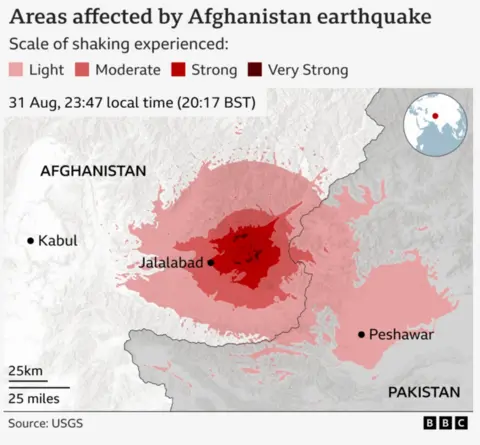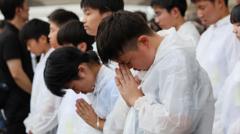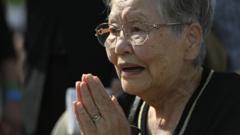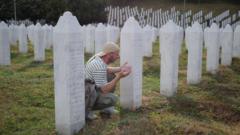As the sun rose over Lower Saxony, a poignant atmosphere enveloped Bergen-Belsen, marking the 80th anniversary of its liberation. Over one thousand survivors and family members gathered to honor the memory of the countless lives lost in the camp, a site that became emblematic of catastrophic human suffering and cruelty.
Liberated by British and Canadian troops in April 1945, Bergen-Belsen was discovered to be a site of unimaginable horror. The chilling reality of the camp unfolded for the soldiers as they entered and encountered a heart-wrenching scene: an estimated 13,000 unburied corpses scattered across the grounds, with around 60,000 barely surviving inmates fighting off disease and starvation. The troops, unprepared for the horror that lay ahead, confronted death on an unprecedented scale.
Among those attending the remembrance was 94-year-old Mala Tribich, who poignantly shared her memories of the camp. "Belsen was a place of skeletons... There was death everywhere," she recalled, describing how guards dragged bodies like discarded objects. Esther Alice, another survivor, emotionally recounted the moment she lost her mother within the confines of the camp.
Reflecting on the horrifying realities of Belsen was not merely an act of memory but of duty. As one British soldier, Michael Bentine, noted, Belsen symbolized the epitome of a moral outrage— one that could not be comprehended by ordinary discourse. Journalists and filmmakers, including BBC broadcaster Richard Dimbleby, struggled to encapsulate the stark horror in words, with Dimbleby famously stating that "this day at Belsen was the most horrible of my life."
The notoriety of Bergen-Belsen stemmed from its grim preservation, unlike other camps where the Nazi regime attempted to hide their crimes. At Belsen, barracks still stood as testaments to suffering, reflecting overcrowding and malnutrition that culminated in around 500 deaths each day in the camp's final weeks. An estimated 30,000 deaths occurred between January and April 1945 alone.
Additionally, the camp bore witness to the demise of individuals like the young diarist Anne Frank, whose loss exemplified the tragic fate of so many. After liberation, the suffering continued as 14,000 inmates succumbed to nutritional complications when given abundant food after their long starvation.
The recent commemoration gathered not only survivors but descendants, emphasizing the important legacy of remembrance. With wreaths laid by veterans from Ajex, the Jewish Military Association, and dignitaries including Deputy Prime Minister Angela Rayner, the event underscored a collective effort to confront the shadows of the past.
In a landscape void of barracks and watchtowers, a visitor center and memorials serve as present-day reminders of this dark history, with one inscription simply stating: “Hier ruhen 5,000 toten”— a somber reminder of the lives that ended there.
As Bergen-Belsen's history continues to resonate, its narrative serves not only as a well-documented historical account but as a grave reminder of humanity's capacity for cruelty, urging present and future generations to never forget.




















